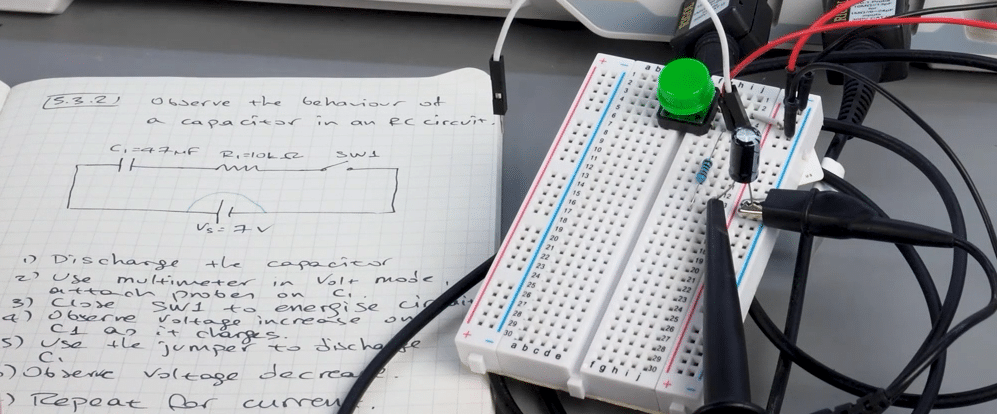ELECTRONICS guide series
Introduction to Electronics Analog and Digital Electronics
This guide will help you understand electronic circuits—the fundamental building blocks of modern technology. Electronics are all around us, embedded in countless devices we use daily, and it all starts with these circuits.

Analog and Digital Electronics
As an electronics student, it is essential to understand the difference between analog and digital systems, as they are both crucial in the development and function of electronic devices. Analog electronics are characterized by signals that change continuously and smoothly over time. These changes can represent fluctuations in sound, light, temperature, or pressure, and they mirror the natural variability found in the real world.
Digital electronics, in comparison, operate using discrete signals. These come in the form of binary values, meaning they switch between two distinct states: usually represented as a 1 (high voltage) or a 0 (low voltage). Digital systems depend on these on-off states, which are the fundamental language of computers and digital communication systems, understanding and processing complex data with remarkable speed and precision.
This table provides a brief comparison of these two types of electronics:
| Feature | Analog Electronics | Digital Electronics |
|---|---|---|
| Signal Type | Continuous range of values | Discrete binary values |
| Represent Data as... | ... variable voltage, current or frequency | ... binary numbers (ones and zeros) |
| Susceptibility to Noise | More susceptible to noise and distortion | Less susceptible to noise and distortion |
| Examples | Vinyl record players, AM/FM radios | Computers, smartphones |
| Complexity | Simpler circuits (often) | More complex circuitry (typically) |
| Precision | Less precise | Highly precise |
Analog electronics are widely used in applications where continuous signal processing is essential. For instance, audio amplification systems, such as those found in home stereo systems and musical instrument amplifiers, rely on analog circuits to amplify sound signals. Another common application is in radio frequency (RF) communication systems, where analog circuits are used to modulate and demodulate signals for transmission and reception. Additionally, analog sensors and transducers, such as thermocouples and strain gauges, convert physical quantities like temperature and pressure into continuous electrical signals for monitoring and control purposes.
Digital electronics, on the other hand, are prevalent in applications requiring discrete signal processing and logic operations. Computers and microcontrollers are prime examples, where digital circuits perform computations and control tasks. Digital electronics are also integral to communication systems, such as in the encoding, transmission, and decoding of digital data over networks. Consumer electronics, including smartphones, digital cameras, and gaming consoles, heavily rely on digital circuits for processing and storing information. Furthermore, digital signal processing (DSP) techniques are employed in various applications, such as audio and image processing, to enhance and manipulate digital signals.
INTRODUCTION TO ELECTRONICS THE BASICS
A comprehensive course to help you start your adventure in electronics. Solve circuits, simulate, and experiment on the breadboard.
Are you ready to dive into the fascinating world of electronics? Whether you're a hobbyist looking to build your first circuit, a student seeking a deeper understanding of how electronics work, or a professional expanding your skillset, this course is your gateway to mastering the essentials of electronics.
Jump to another article
1. What is this course about?
2. Hardware
3. Software
4. Course organisation and study guide
5. What are electronic circuits?
6. What is electricity?
7. Key principles in electronics
8. Direct Current (DC) and Alternating Current (AC) circuits
9. Analog and Digital Electronics
10. Introduction to electronic components and tools
11. Resistors, quick introduction
12. Capacitors, quick introduction
13. Inductors, quick introduction
14. Diodes, quick introduction
15. Transistors, quick introduction
16. Integrated circuits, quick introduction
17. Circuit boards, quick introduction
18. Breadboards, quick introduction
19. Ohm's Law, quick introduction
20. Basic tools in electronics
21. Circuit simulators
Last Updated 8 months ago.
We publish fresh content each week. Read how-to's on Arduino, ESP32, KiCad, Node-RED, drones and more. Listen to interviews. Learn about new tech with our comprehensive reviews. Get discount offers for our courses and books. Interact with our community. One email per week, no spam; unsubscribe at any time
